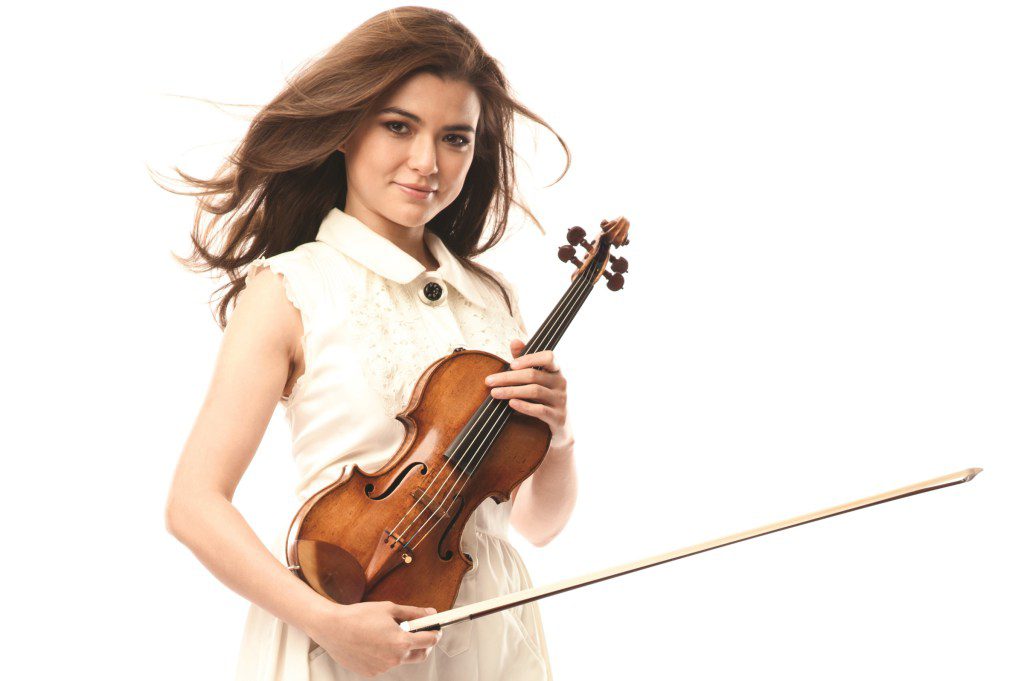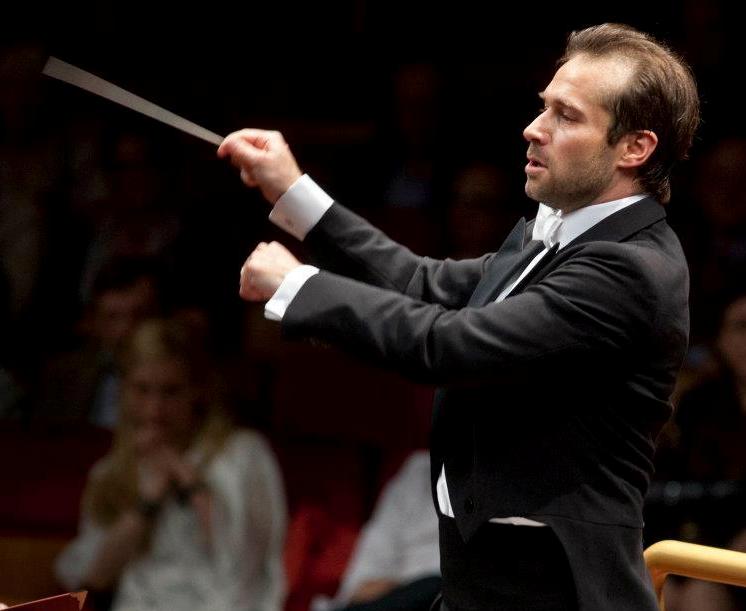Gabel and Gomyo bring silver screen lushness to Houston Symphony program

Karen Gomyo performed Tchaikovsky’s Violin Concerto with the Houston Symphony Saturday night.
One can’t accuse the Houston Symphony of limiting itself to the tried and true. Saturday night’s program at Jones Hall held only one well-known work, Tchaikovsky’s Violin Concerto. That led to Tchaikovsky’s much-less-familiar The Tempest, inspired by the eponymous Shakespeare play.
Guest conductor Fabien Gabel otherwise sidestepped the orchestral canon entirely. He sandwiched the Tchaikovsky pieces between two Hollywood scores: Bernard Herrmann’s Vertigo suite, which opened the concert, and Erich Wolfgang Korngold’s The Sea Hawk suite, which closed it.
Rich veins of ardent melody and sonic theatrics ran through all the works. If the four looked like an unlikely match on paper, they fit together in practice, thanks especially to playing of vividness and dynamism from the Houston Symphony.
Tchaikovsky composed The Tempest as a followup to his Romeo and Juliet, and he again focused on aspects of Shakespeare’s play. The 24-minute work includes a deep, sonorous depiction of the sea; an explosive storm; tone-portraits of main characters; and a tender melody evoking young lovers’ affection.
The work’s themes may not be as arresting as those in Romeo and Juliet, but Tchaikovsky whipped them into a sumptuous and colorful score, tackled by the musicians under Gabel with unstinting theatrical flair.
The sea-music was quiet but massive, with dark, sonorous strings creating a broad sonic horizon; the French horns intoned their spacious theme in long-breathed phrases. The orchestra’s explosive virtuosity conjured up the storm. Pealing brasses heralded the magician Prospero, and a burst of bounding energy from the cellos and basses helped describe the wild nature of Caliban.
The cellos sang out the love theme sweetly when it first appeared. But by the time The Tempest ended, the melody had thundered forth in blazing tones. Yet no matter how powerfully the orchestra opened up, its sound remained resonant and gleaming, never harsh.

Fabien Gabel
The Sea Hawk gave the symphony nearly as much of a workout. Korngold created the score for an Errol Flynn swashbuckler about a privateer on the high seas, in his patented Late Romantic style that harkens back to Richard Strauss. The driving energy and triumphant outbursts of Ein Heldenleben echo in The Sea Hawk, and the orchestra swept through the fanfares and muscle-flexing with flair on Saturday.
The Sea Hawk’s other main ingredient is a love theme whose ardor comes as much from its lush scoring as its tune. Gabel and the orchestra spun it out in silky, caressing phrases–a seductive counterbalance to the Straussian heroics.
Eeriness took hold in Herrmann’s Vertigo, befitting the score for an Alfred Hitchcock thriller. The film centers on a man obsessed by memories of a dead woman, and unsettled harmonies give Hermann’s entire suite an ominous undertone.
Gabel and the orchestra played up the starkness of the “Prelude” with its hushed but tense harp arpeggios interrupted by snarling, dissonant chords. The group put a malevolent bite into “Nightmare,” a haunting transformation of a Spanish dance. The “Scene d’amour” was given a moonlit shimmer by the violins that made it doubly foreboding.
The Tchaikovsky concerto, evergreen though it is, received a performance that was hardly ordinary. Soloist Karen Gomyo positively luxuriated in Tchaikovsky’s melodies. Whether they were big-hearted or introspective, she molded their contours sleekly and lingered over their most expressive turns of phrase.
The unhurried, meditative aura Gomyo gave the violin’s entrance solo hinted at what was in store. As the first movement unfolded, she treated Tchaikovsky’s lyricism to richness, delicacy and silvery gleam by turns. Even the cadenza had an unusually brooding cast, with Gomyo giving each flourish a smoldering intensity of its own. But when the music roused, she brought it nimbleness and polish.
Gomyo made the Canzonetta’s first theme unfettered and dreamy, the second more flowing and urgent. Thanks to her veiled tone, the entire movement was a reverie. When the finale broke out, Gomyo put dash in the forefront. But here again, she slowed down to relish Tchaikovsky’s felicities–even bringing the music almost to a halt before seizing again on the main theme’s vitality.
Gabel and the orchestra were simpatico partners with Gomyo all the way. The orchestra’s transparency enabled her to whisper without being drowned out, and Gabel kept the group in sync with her free-spirited pacing.
The Houston Symphony repeats the program 2:30 p.m. Sunday in Jones Hall. houstonsymphony.org; 713-224-7575.